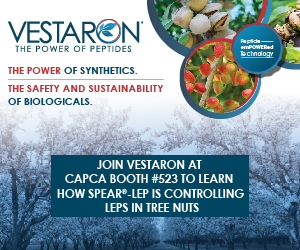
New insecticides, new combinations of insecticides, biological controls and improved mating disruption to control vine mealybug (VMB) are all under study, but costs and necessary control levels are issues, said UCCE Assistant Specialist Kent Daane.
The invasive vine mealybug is the most problematic of all mealybug species and causes the most damage in California vineyards. Damage by the vine mealybug is similar to that of other grape-infesting mealybugs in that it produces honeydew that drops onto the bunches and other vine parts and serves as a substrate for black sooty mold. Mealybugs also will infest grape clusters. Vine mealybug can vector grapevine leafroll associated viruses which have been associated with sudden vine death.
During dormancy and early spring, VMB are found primarily on the trunk, canes and roots, but this can vary by vineyard location. In the spring, VMB moves onto canes and later onto leaves. In the summer, VMB moves into grape clusters. The trunk and the bark of canes provide refuge from insecticides, including systemics and natural enemies.
Ants can be a sign of a VMB infestation. Daane said that ants give refuge to VMB and also improve their habitat by removing honeydew. This tending by ants, increases VMB populations.
Bark wetness is a sign of a mealybug infestation as honeydew production increases. Leaf drop in June can also be sign of an infestation. If a VMB infestation is suspected, crowns and trunks can be inspected in the spring for adult females and crawlers. Starting at bloom, cordons, canes and basal leaves should be inspected. When fruit is present, clusters can be scouted for signs of VMB. Pheromone traps in vineyards from August to October can give record of VMB numbers and indicate numbers for next season. Daane warned that it is common to have high trap counts with little actual crop damage.
Increasing resistance to chemistries used in the past to control VMB make it important to rotate those chemistries which are still effective. Daane said there are both conventional and OMRI-approved insecticides to control VMB, but none provide 100% control.
“Movento is the best, but we are seeing cracks in control,” he warned.
Use of mating disruption devices in the vineyard can help with control. They work best with low VMB pressure. Daane said the effect is better in the second or third year. Ants also must be controlled.






















